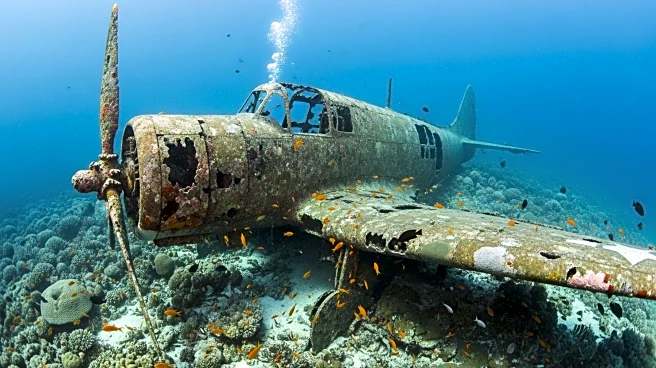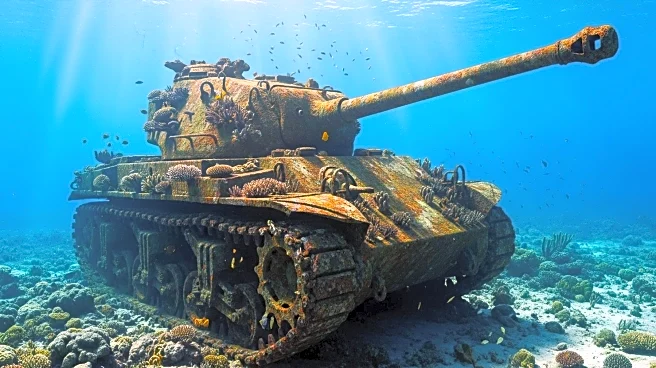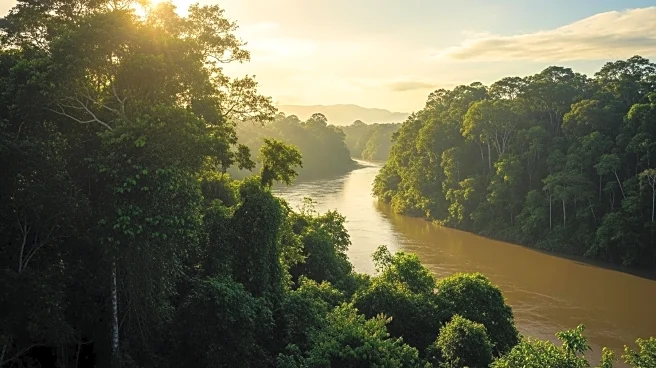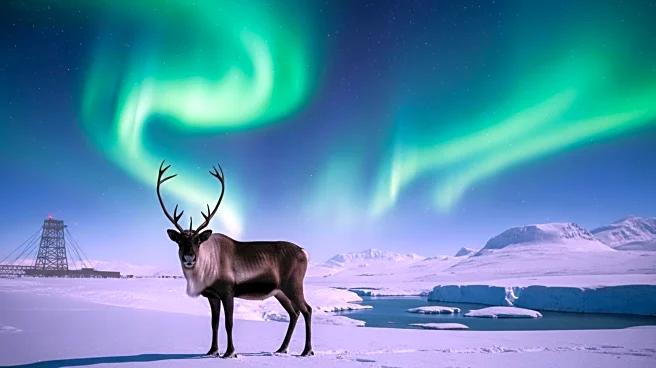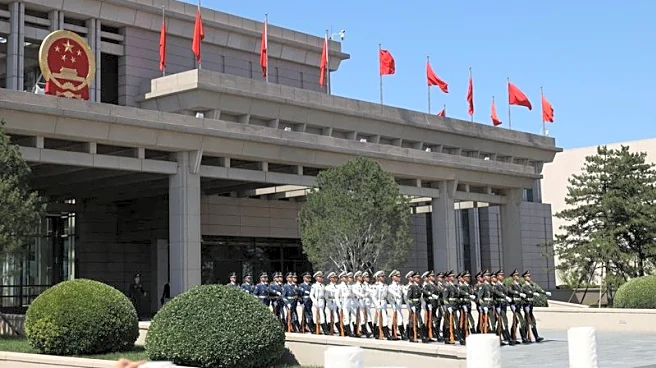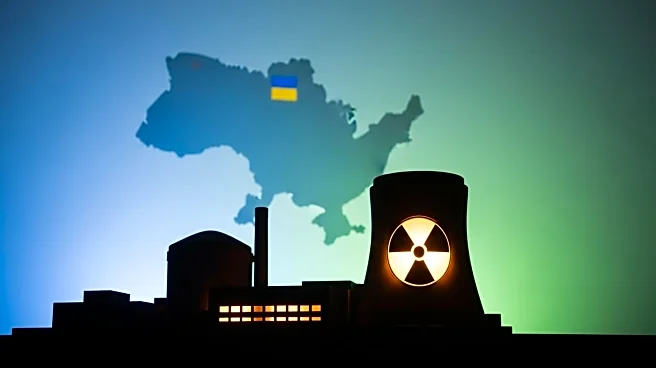What's Happening?
Eighty years after the end of World War II, remnants of the conflict continue to pose environmental and health risks in the Pacific. Sunken warships, aircraft, and unexploded ordnance leak hazardous substances into ecosystems, threatening biodiversity and human health. The Pacific region, a major battleground during the war, still contains thousands of wrecks and discarded materials. These remnants release toxic pollutants, which can accumulate in marine life and enter the food chain. Climate change exacerbates these risks, with extreme weather events exposing and shifting wartime remnants.
Why It's Important?
The enduring presence of WWII remnants highlights the long-term environmental impact of conflict. These toxic legacies threaten fragile ecosystems and pose health risks to communities in the Pacific. The situation calls for coordinated international efforts to address and remediate these hazards. The issue underscores the need for historical accountability and support for affected regions. Addressing these challenges is crucial for protecting biodiversity, ensuring public health, and fostering sustainable development in the Pacific.
Beyond the Headlines
The 80th anniversary of WWII offers an opportunity to reflect on the environmental and human costs of war. Remediation efforts should focus on removing dangerous materials, restoring ecosystems, and monitoring health impacts. Regional partners have a chance to lead in environmental cleanup and support for affected communities. Listening to Pacific voices and incorporating their knowledge and experience is essential for effective responses.
